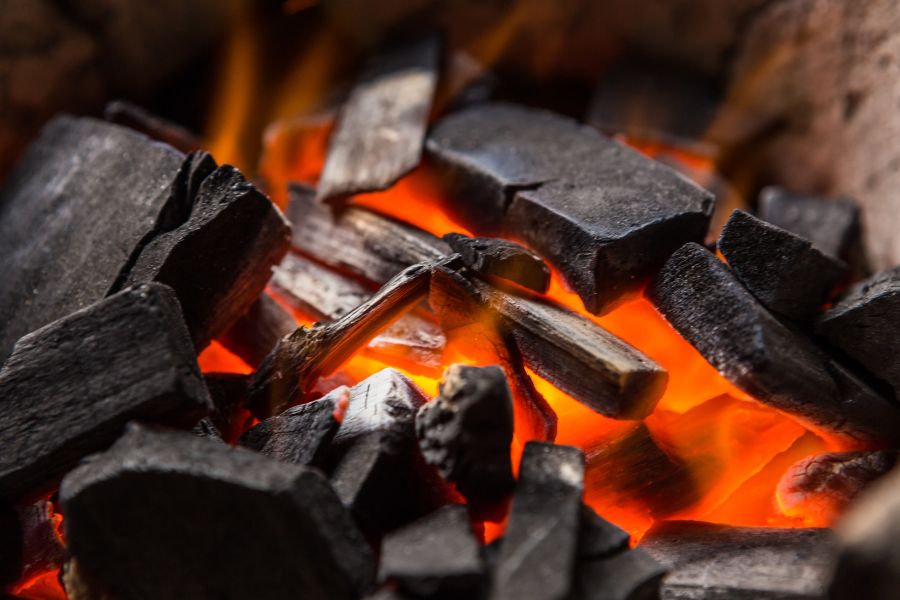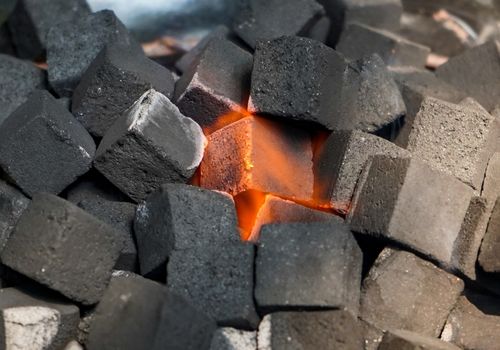Like most things, charcoal can go bad if you don’t store it properly. However, if you follow the proper storage guidelines, you should be able to use the coals for at least a year.
Charcoal is often produced by heating wood in a low-oxygen atmosphere until its chemical components are released. The resulting product is a carbon substance that serves as fuel for many barbecue pitmasters, including myself.
Now, a common question I get from new BBQers is whether this carbon fuel goes bad. Today, I’ll highlight how I keep this affordable ignition source in perfect, flammable condition.

So, does charcoal go bad? Charcoal does not expire as long as you store it properly. However, the charcoal will spoil if you fail to keep it correctly.
You’ll know the coals are bad when they smell like vinegar. That’s why I recommend keeping charcoal in areas without temperature fluctuations and dampness.
If you notice dust on the charcoal, that doesn’t mean it has gone bad. However, it may indicate that the fuel may not be as potent as when you first bought it.
The reason for all that dust is probably because you left the charcoal sitting unused for a long time. You can simply brush off the dust and use the charcoal as you intended. Fortunately, if you store charcoal properly, it can stay flammable for over a year.
Keeping charcoal fresh can be tricky if you don’t know what to do. Luckily, I’ll discuss some tips that help increase its shelf life.
For long-term storage, charcoal needs to be kept cool in a dry place. Exposure to moisture can lead to the growth of mold, which causes the coal to smell bad and decreases its shelf life.
The risk of mold will be decreased if you keep the charcoal in an airtight container or bag. Remember, don’t place the coals on bare soil. Doing this will ruin your charcoals.
Additionally, charcoal needs to be kept cool and odor-free. So, make sure your cabinets aren’t water damaged and are kept clean in general, because coal absorbs the smells of nearby items.
Next, store your charcoal away from moisture. Even though charcoal is water-resistant, remember that prolonged exposure to too much moisture will make the fuel impossible to ignite. So ensure that you store the coal away from all nearby water sources close to your home to keep the charcoal dry.
If you suspect that charcoal has been exposed to humidity for a long time, you need to first confirm your suspicions. Match light the charcoal to see how well it burns over time.
If the carbon substance has issues fully igniting, or isn’t burning evenly, it has likely absorbed too much moisture.
Note that you may be unable to restore the charcoal by drying it out if it is wet. So, you might need to dispose of it and buy a new bag of charcoal.

However, if the chunks of coal aren’t too moist, spread them on baking paper and expose them to direct sunlight for one to two days. After that, match light the charcoal to check if it’s burning properly.
Keep in mind that even after drying out the moist coals, you might be unable to restore it to its pristine, flammable state. For this reason, it is best to practice the storage tips we discussed earlier.
Find out how long charcoal lasts here.
Charcoal comes in several types, each with unique properties. The type of charcoal you use will impact how well you cook. Find out the five charcoal types to choose from below.
Lump charcoal is made entirely of hardwood with no additives. Lump charcoal is produced when wood is burned without oxygen, resulting in a carbon-based substance.
I like how lump charcoal ignites quickly and can burn at high temperatures. However, the quick burning rate means that it occasionally doesn’t burn evenly.
I recommend using this coal for grilling vegetables and meats that cook quickly, such as hamburgers and hot dogs.
Briquettes are a common favorite for grillers. You’ve probably seen this charcoal-type at a friend’s barbecue. Charcoal briquettes are compressed bits of sawdust treated with chemicals for quicker ignition.
These charcoals are my preferred choice when I plan on grilling for a fair amount of time on the smoker.
Briquettes can burn for a lot longer than lump charcoal because they contain additional components to help them maintain their structure.
They also allow you to manage the high heat a little better. Moreover, briquettes are affordable and simple to use. However, some briquettes release foul smoke when first lit because of the accelerant coating.
Hardwoods are created in a similar way to briquettes, but hardwood burns more slowly. Due to its density, this species of wood conducts heat slowly.
If you want to grill for long hours without worrying about refilling or reigniting the charcoal, hardwood briquettes are an excellent option.
Binchotan has been produced for centuries, and the lengthy, labor-intensive procedure can take weeks.
They are made from branches and wood pieces from Japanese oak trees and are heated in kilns for one to three weeks to achieve the ideal consistency.
Remember, binchotan is scarce, so you may experience some challenges buying it.
You may not be familiar with coconut charcoal. This fuel is a useful by-product of coconut husks.
Coconut shell charcoal is produced by a technique called distillation instead of the controlled burning method used on other charcoal types. The distillation method makes the product burn longer than lump charcoal.
Depending on where you live, the price may be similar to regular briquettes, or it may be more expensive. You may be surprised to discover that this form of coal smells like regular coal.
Fortunately, you can reuse old charcoal. First, look for the larger charcoal chunks and take off as much ash as you can. Pick out the coals with less ash.
Then, put your charcoal in a cool and dry place, preferably in an airtight bag or container. Remember, you’ll need to mix old and new charcoal for the best burn. Also, adding some wood chunks helps.
Firstly, you can use the ash from lump charcoal as compost for plants since it is only made of wood. On the other hand, if you don’t plan on re-igniting briquette coals, it’s best to put them in an old bag and dispose of them properly because of the chemical additives.
Ensure that the smokers’ vents are not blocked and that there is enough airflow. Charcoal will stay lit so long as these conditions are met. Sufficient airflow means there’s enough oxygen to keep the coals lit. So, as long as you don’t suffocate the coals, your grill will continue burning. On top of that, you don’t need to worry about re-igniting the fuel at intervals.
Sadly, cheap charcoal typically crumbles when it is wet, making it completely useless because it will turn powdery. High-quality charcoal can also be dried out and used, but it will only be suitable for slow burning and will produce significantly more smoke during combustion.
You can use water to quickly put out the charcoal. Ensure that you pour the water on the charcoal slowly instead of drenching the fuel source with it.
Finally, turn the coals over with a coal shovel and douse them until they are all turned off. Keep in mind that adding water to hot charcoals can produce hot steam so pour water slowly to prevent inhaling a lot of fumes.
Charcoal can go bad if you don’t store it well. Poor storage conditions will expose the coals to moisture, particles, and heat, which will reduce the coal’s effectiveness.
So, ensure that you store fresh charcoal in an airtight and dry place. If stored correctly, the charcoal will remain usable for a year or longer.
Feel free to browse through our latest informative BBQ guides. You might just learn something new!